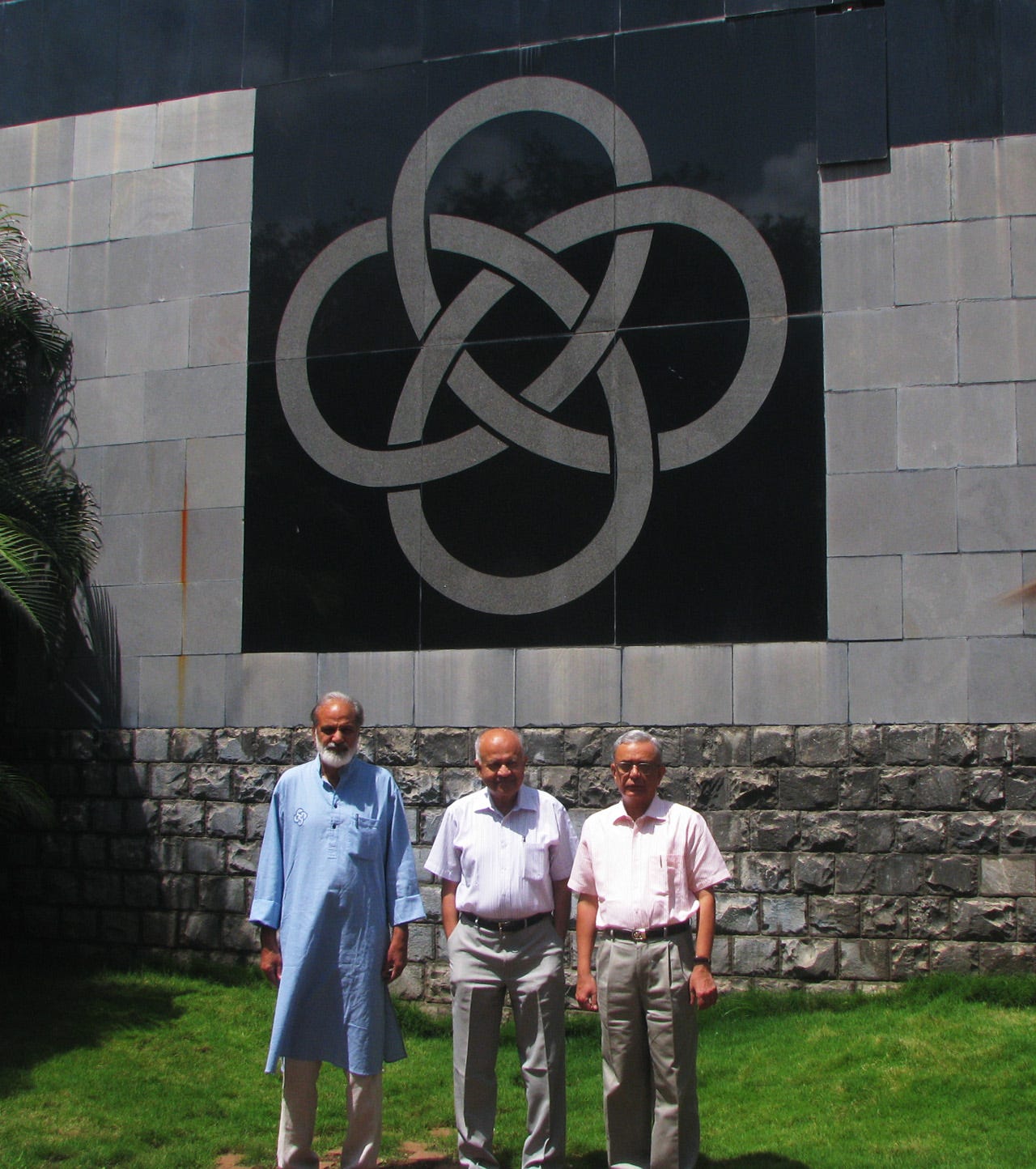The IUCAA Story, Part 9: The aftermath
Beyond the Blueprint: IUCAA's True Test
This is where the IUCAA story is supposed to end. However, describing how the Centre has performed since its dedication to the Nation, will make the story too long! So here I conclude with a few comments.
I have heard many people complain that the administration or management of an institution takes up so much time that one cannot do anything creative. My own experience has been otherwise: I discovered that by letting your colleagues share the burden through delegation of responsibilities, you can find more time for your cherished activities–in my case, for research, teaching and writing. Even so, it becomes important how one manages the twenty-four hours that all of us are allotted every day and night. In this instance, I heard an excellent anecdote that I wish to share with you, as it reflects the strategy I have been following in this regard.
Once a teacher brought a jar to the class, along with stones, pebbles, sand and water. He proceeded to fill the jar with big stone pieces. When he could put no more in, he asked if the jar was full. “Yes”, said the class. “Wrong” replied the teacher as he proceeded to put in small pebbles, which went into the many interstices. When he could put no more pebbles, he repeated his question. “No” roared the class, this time aware that there was still some space left for the grains of sand. After filling as much sand as he could, the teacher asked again: Is the jar full? Again the class answered, “No”. “Correct,” said the teacher as he filled the remaining space with water. “What do you learn about time management, from this experiment?” The teacher asked. The class answered: “In between your major tasks there is always time available to carry out your many minor duties.” “Excellent!”, said the teacher. “But there is more to it”, he said and proceeded to perform another experiment. This time he started filling the jar in the reverse order, first with sand and then pebbles. However, when he came to the stones, there was no room left for them! The moral? “If you spend more time on your smaller tasks, you may find that you have none left for your big and important activities!” So it all boils down to getting your priorities right and then fitting all things big and small in the right order!
Before the IUCAA adventure, I had close experience of two famous institutions: the Institute of Astronomy at Cambridge, founded by the famous astronomer Fred Hoyle and the Tata Institute of Fundamental Research, founded by Homi Bhabha.


Fred Hoyle resigned and left Cambridge when the first six years of his institute were over. The institute, combined with the optical observatory next door, reemerged in a larger form. Homi Bhabha had two decades at the helm of the TIFR, during which time the institute grew in strength and moved to its present premises on the shores of the Arabian Sea. I am sure both these founders had a sense of satisfaction at achieving something of lasting value, something which generations of scientists and students can benefit from. A Founder Director of a successful institution has this enviable sense of satisfaction.
There is always a feeling of insecurity when the Founder Director of a successfully run institution moves away from the scene. The Founder may have contributed enormously to the institution, from its genesis to its state of glory. However, the real test of their achievement lies in how the institution performed after the founder was gone from the scene. This is when its inherent strength would be tested. The best of scientific institutions, like the Cavendish Laboratory in Cambridge, College-de-France in Paris, or the Institute in Gottingen, have had their ups and downs, as science itself goes through wave-crests of high excitement and activity interspersed with relatively fallow and dull periods of modest productivity.
These ups and downs should not be judged in the same way as the profits and losses of an industrial unit. The essential feature to look for is whether the institution has an inherent strength, a group of first-class research scientists, state-of-the-art facilities, and a competent support staff, all covered by rules and bye-laws that are intelligently designed to help fulfill the basic aims and objectives of the institution. Given these fundamental strengths, the organization will ride through the fallow periods and once more attain peaks of glory. Though people who have been fortunate enough to create successful institutions enjoy being at their helm, they are even more fortunate if they wisely relinquish the responsibility to others when the time is ripe, and watch the progress of their creation from a distance in a detached mood. The Karmayoga advocated by the Bhagavadgita shows the way for a graceful exit.



RIP, Prof. Narlikar. Sad to lose one of the country’s most prolific scientists, thank you for pushing astrophysics in India forward.
Ohh prof i found you here accidentally, my friends talk about you a lot.